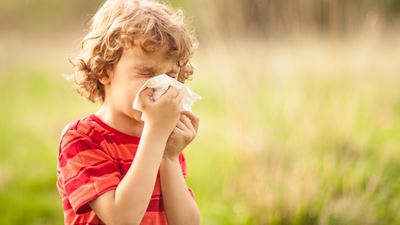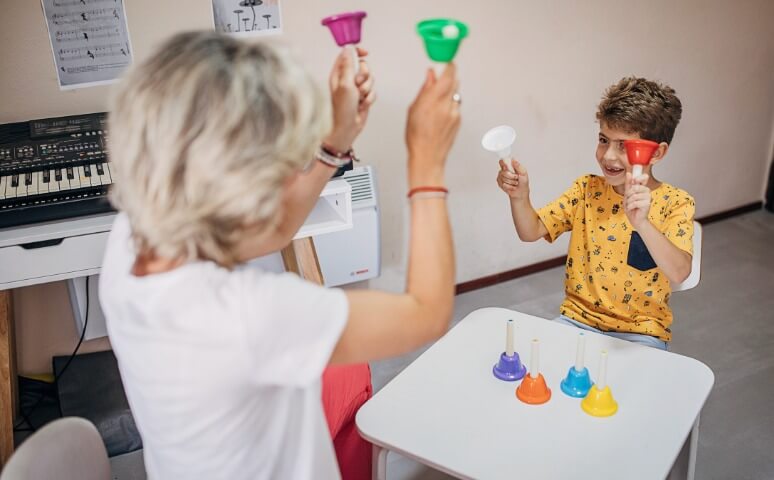The arrival of spring brings warmer weather and longer days, which is great news for kids aching to get outside. But spring also brings an increase in allergies due to trees and plants releasing pollen and other particles. Do you have a child who is sneezing, stuffed up, complaining of itchy skin and eyes, or experiencing other symptoms of seasonal allergies? If so, they don’t have to suffer for weeks on end from these common reactions to pollen. Here are some steps you can take to identify, prevent and treat your child’s allergies.
What Are Seasonal Allergies?
Seasonal allergies occur as a reaction to certain allergens that come and go during particular times of the year. This differs from perennial allergies, which are allergic reactions to things we’re exposed to year-round, such as our pets or dust mites. The most common triggers for springtime allergies include ragweed as well as certain types of grasses and species of trees, including birch, cedar, maple and oak.
Some factors — like windy days that stir up pollen — also can make weeds, grass or tree pollen allergies worse. Thunderstorms also can aggravate allergies by dispersing particles and breaking them into even smaller (and inhalable) pieces.
What Are the Symptoms of Seasonal Allergies?
It sometimes can be difficult to determine whether the symptoms your child has are due to a common cold or seasonal allergies. But the signs of a reaction to pollen or other particles versus the signs of a cold differ slightly. Typical seasonal allergy symptoms include:
- Stuffy, runny or itchy nose
- Itchy throat
- Itchy and watery eyes
- Itchy, dry and/or scaly skin (eczema)
- Cough and/or wheezing (asthma)
For comparison, a common cold usually starts with a few days of sore throat, followed by nasal symptoms, followed by a cough around day three to five. A cold also is at its worst by day five to seven and gets better during the second week. On the other hand, allergy symptoms tend to ebb and flow throughout the day. Seasonal allergies also last for days, weeks or months. When in doubt about your child’s condition, schedule an appointment with your doctor.
How to Reduce or Prevent Seasonal Allergies
If you know your child suffers from seasonal allergies, you can take some steps to lessen their symptoms.
- Consider keeping your windows closed during allergy season and instead use air conditioning, a HEPA filter and/or a dehumidifier to reduce allergens inside your home.
- Don’t hang clothing or bedding outside to dry during allergy season.
- Have your child wash their hands and face, as well as change clothing, after playing outside.
- Schedule bath time during the evening to keep pollens away from sheets and pillowcases.
While these steps often can reduce your child’s allergy symptoms significantly, there also are many preventive medications. Nasal steroid sprays are common, as well as anti-allergy medicines, such as Montelukast. When used daily, these medicines can control and even prevent seasonal allergy symptoms.
What Are the Treatment Options for Seasonal Allergies?
There are several treatment options for children sneezing their way through spring. If you’re unable to manage your child’s symptoms with basic avoidance measures, try combating allergies through over-the-counter antihistamines. Keep in mind that traditional antihistamines, such as Diphenhydramine, are short-acting and can cause drowsiness. Newer antihistamines often last for 24 hours and won’t have your little one feeling foggy-headed during the day.
There also are allergy eye drops and short-acting nasal sprays that can be used for itching, runny noses, sneezing and other symptoms. Over-the-counter nasal steroid sprays, such as fluticasone, should be used if directed by your child’s doctor. These work well if used daily to prevent and control symptoms such as itchy eyes, sneezing, runny nose, congestion, cough and even some allergy-induced asthma symptoms.
If your child continues to experience the same or even worsening symptoms while taking antihistamines, then it’s time to speak with your doctor. Depending on your child’s symptoms, combinations of medications may need to be introduced or your child may need to undergo allergy testing. In cases of severe seasonal allergies, an allergist may suggest allergy shots or other forms of immunotherapy.
Are You Interested in Learning More?
Sign up for our e-newsletter for more tips and best practices from pediatricians.
Sign Up Here









